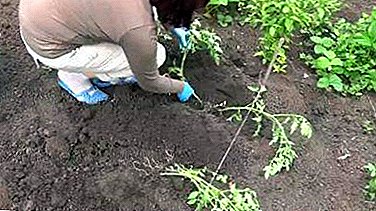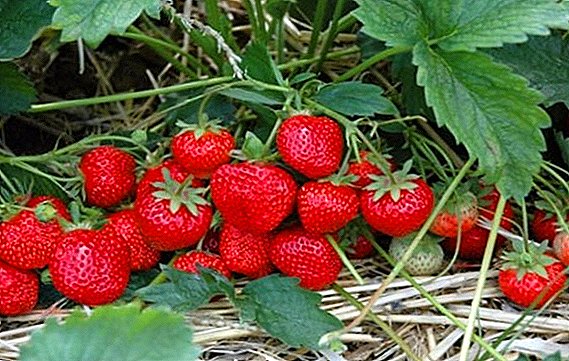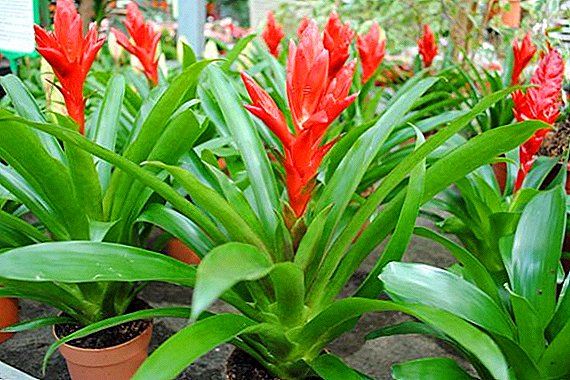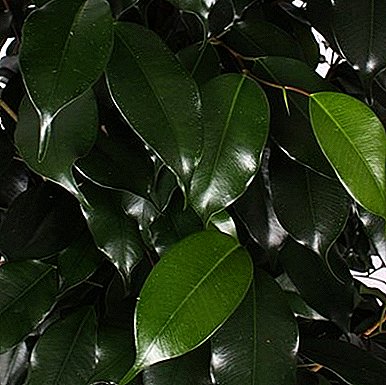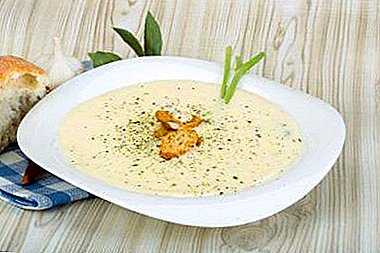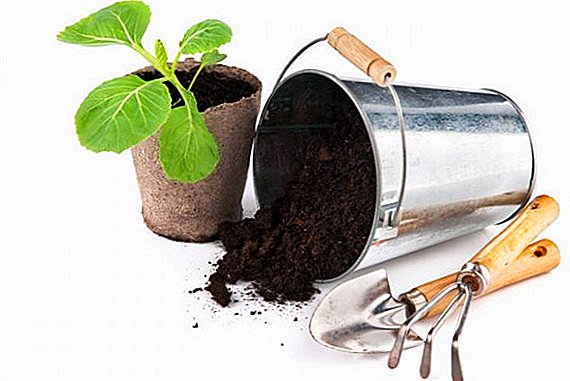
For carrots, the pests are dangerous because they are practically invisible on the plant, but they do much more harm than ordinary diseases.
Pest control needs to be waged in two ways: systematic and preventive. However, before applying one of these methods, it is necessary to determine the causes of certain pests.
Their definition will help prevent the spread of pests and their recurrence. In the article presented below we will analyze in detail all the types of pests, as well as ways to combat them and effective methods of prevention.
Causes of occurrence in open ground conditions
A pest is an insect or animal that feeds on your crop. It is important for him to get all the nutrients. If the disease is easy to notice and cure, then the summer residents will face a real war with the pests.
Causes of pests:
- The beds are located for many years at the same place.
- Carrots are planted separately from other crops.
- The same dressing and the same fertilizers are used.
- Weather conditions: humidity, heat.
Of course, the main reason your carrot beds are attacked by pests is the lack of proper care and the neglect of preventive measures. Consider separately the category of pests.
Description of parasites and methods of dealing with them, photo
Carrot fly
The fly sleeps underground, and then wakes up and harms the root. If the tops become a bronze shade, and the leaves die off and fall off, then this is a sure sign that the carrot fly has started. It looks like an ordinary pupa under the ground, and then turns into an almost imperceptible gray-brown insect.
How to fight:
- Before planting, plow the land, loosen it and clear weeds.
- Use tillage products (Decis, Sharpei, Aklelik and Profi). The solution should be mixed with a bucket of water, water the seedlings twice - in the morning and in the evening during the week after planting.
- Among the folk remedies will help ammonia - they need several times a week to work the soil before planting. Take a bucket of water, pour a little alcohol in there (200 ml per 1 bucket) and pour the earth. You can also repeat during the week after planting.
The photo below shows how the carrot fly looks like:

The video shows how to get rid of carrot flies:
Listobloshka
Carrot listobloshka is a small transparent green insect with wings and legs like a flea. Not only devours the leaves, but also leaves offspring in the form of eggs. Then the larvae emerge from them, devouring everything in their path.
Chemical and folk treatment:
- Dealing with leaf shells will help care for the plant - it is processing them tobacco dust. Take tobacco dust, mix with water, apply the solution on a rag and wipe the leaves of the plant.
- Leaves need to wipe soap solution. Take a bucket of water, mix with soapy water and wipe twice a day (if the weather is dry), if it is wet - once a week is enough.
- Use chemicals for preventive tillage - Profi, Tsiper and others. The instruction is similar, as in the fight against carrot fly.
Photo Listobloshki:

Umbrella moth
The insect resembles a small cute butterfly, but in fact is a malicious pest. If it is in addition similar to the brown mole, then it is doubly dangerous - it affects the fruit and roots of carrots, which will lead to loss of the crop. A moth does not just kill a plant, it leaves cocoons in it. The moth is the most dangerous in the middle of July, then it turns into a pupa and falls asleep.
To get rid of the pest you need to follow the rules:
- Mechanically clean the landing - cut off a part of a plant, remove insects, burn pupae.
- Spray carrots with antibacterial solution - for example, lepidocide. (read the instructions before use)
- Grind all the soil before new landings.
- Use folk remedies - ash and soapy water to clean the plant. (instruction as in the fight against the leafs)
The umbrella mole is shown below:

Bare slugs
Slugs are dangerous pests for carrots. Slugs destroy crops of carrots, and then lay eggs into the ground, which prevent the roots from growing. Eggs in slugs look like fish eggs. The common slug reaches up to 60 centimeters in length, has a smooth body, yellowish-white or grayish-pinkish. It happens that it has stripes on the body or black spots.
It is important to follow the preventive measures:
- To clear a site of litter and a grass.
- Do not leave on the site tops, leaves of cabbage and other vegetable crops.
- Treat the soil with minerals (take a bucket of water, mix with mineral mixture and water), drain all ditches nearby.
- Remove stones, sod, and other slug habitats.
- When used against: Mix lime solution with 250 grams of ash. Add in superfoot mix - about 600 grams, cultivate the ground. It is necessary to spray with a solution of salt (10 percent). It is advisable to carry out spraying late at night - during the feeding of the slug.
The photo shows a naked slug:

Wireworm
These yellowish worms no more than 3 centimeters long are insects dangerous to carrots. And in fact - it is the larvae of the click beetle. Therefore, if on the site you see a dark striped shiny beetle, then you should be wary. The beetle can be identified by the sound it makes - this is a loud click. Wireworm cubs eat everything: the roots of the rat, as well as all the parts hidden under the ground.
How to process store and folk remedies:
- The best effect: ammonium sulfate, ammonium nitrate. Add about 200 ml of mixtures to a bucket of water and pour the soil before planting.
- The soil should be fertilized with limestone solution. 200 grams of solution in a bucket of water, add as a result after planting. To process 2 times a week.
- Before seeding, treatment with insecticides is necessary.
- Loosen the soil before planting, remove weeds, especially if there is a lot of wheat grass on the plot.
- Chemical preparations also help: Basudin Etemem-F. Spraying them should be in the evening, on the entire surface of the soil.
- Ammonium nitrate, which should be added when digging the soil before planting, will help from folk methods.
The following are wireworms:

Learn from the video about how to deal with the wireworm:
Carrot aphid
Aphid looks like a classic representative of this species. Invisible green insect that massively lives on plants. Because of the aphids, the leaves dry and fall off, and the carrot stops its development, as the aphids devour its stems. Ways to get rid of aphids are similar to the measures that are used in the fight against the fly:
- It is better to spray carrots in the morning with water, use a soap solution and ash, as well as tobacco.
- For prophylaxis fit phytosporin and other means containing fluorine. Take the drug, mix it with water (for 3 liters one pack). Add to the soil twice a week.
Below is a carrot aphid:

Exclamation and winter shovels
Both the exclamation and winter scoops look like brown butterflies, and in the period before the transformation - nasty brown caterpillars. Scoops destroy the crop, so during the pupation period, it is worthwhile to engage in prevention.
- Provide abundant watering, which will destroy up to 90 percent of pests.
- But it is better to kill the caterpillars with drugs - lepidoicide in a strong concentration (add to the ground before planting).
- Effectively deal with shovels can and with the help of popular methods - infusion of chamomile and burdock. Take an infusion of chamomile and burdock, mix with water (2 packs of the mixture per bucket of water), treat the soil after planting for a month twice a week.
In the photo exclamation scoop:

Below is a winter scoop:

Medvedka
This large insect with a cute name has a brown color and a durable shell. Insect with its strong jaws gnaws the roots and stems of carrots. To avoid the appearance of a bear on carrot beds:
- It is necessary to loosen the soil between the rows before planting.
- You can water these places with kerosene or bitter pepper and mustard infusion.
- Also, Medvedka can not stand the smell of washing powder. Add it to the ground before planting.
Countermeasures: for Medvedok make traps:
- On the boards they put manure in different parts of the garden, where the headings take and climb.
- Once a fortnight heaps are burned, replacing them with new ones.
- Medvedka also does not like the smell of flowers of marigolds and chrysanthemums, they should be planted next to the beds.
- Good results are also provided by the modern drug Medvetoks.
The photo shows how the bear looks:

Gallic nematode
This insect harms a variety of plants.including carrots. This worm-like very small insect, penetrates into the roots, forming on it an ugly growths.
- Prevention: the soil can be cleaned with carbon disulfide or formalin.
- Heavily infected plants are destroyed, and the soil is completely cleaned.
- You can try drugs, for example, Dekaris, which are usually prescribed to fight helminths.
The photo shows the gall nematode:

Rats and mice
To protect the roots and need from mice and rats. These animals devour the roots of the plant, as well as carry various insects that can harm carrots. There are several ways to fight:
- Plant black elderberry in the garden - it is poison for rats and mice.
- Mice do not like the smell of mint and anise, so you can use the following recipe: crush the leaves of mint in a mortar, add anise, some water, mix it all up and pour it next to the beds where the carrots are. You can pour the beds themselves as preventive measures.
Below is the mouse:

Preventive measures
It is very important to carry out preventive treatments:
- In order to avoid the appearance of disease, it is necessary Phytosporinum.
- Prevent insects by using spraying drug Hom.
- Avoid the appearance of harmful flies by using decoction of tomato tops. Every 2 liters of product is diluted in a bucket of water and add 2-3 tablespoons of liquid soap.
- From many other insects spring will help special insecticide treatment.
Insects and small rodents, of course, are the main pests for carrots. Prevention, the right chemicals based on chemicals, as well as popular recipes will help to cope with them. The main thing is to individually approach each problem that has arisen and to observe measures that will not lead to a loss of harvest.


